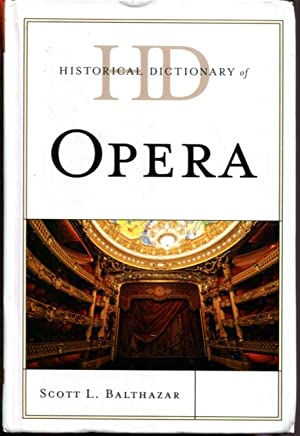
ROWMAN & LITTLEFIELD/SCARECROW PR. - 8108
Historical Dictionary of Opera
Author: Scott L. Balthazar
Publisher: Scarecrow Press
Historical Dictionary of Opera
Juilliard Store
144 West 66th Street
New York NY 10023
United States
Choose options
Historical Dictionary of Opera
Juilliard Store
144 West 66th Street
New York NY 10023
United States
Historical Dictionary of Opera
Juilliard Store
144 West 66th Street
New York NY 10023
United States
Indeed, this book has an amazingly broad scope. The dictionary section, with about 340 entries, covers the topics mentioned above but obviously focuses most on composers, not just the likes of Mozart, Verdi and Wagner, but others who are scarcely remembered but made notable contributions. Of course, there are the divas, but others singers as well, and some of the most familiar operas, Don Giovanni, Tosca and more. Technical terms also abound, and reference to different genres, from antimasque to zarzuela. Since opera has been around so long, the chronology is rather lengthy, since it has a lot of ground to cover, and the introduction sets the scene for the rest. This book should not be an end but rather a beginning, so it has a substantial bibliography for readers seeking more specific or specialized works. It is an excellent access point for readers interested in opera.
